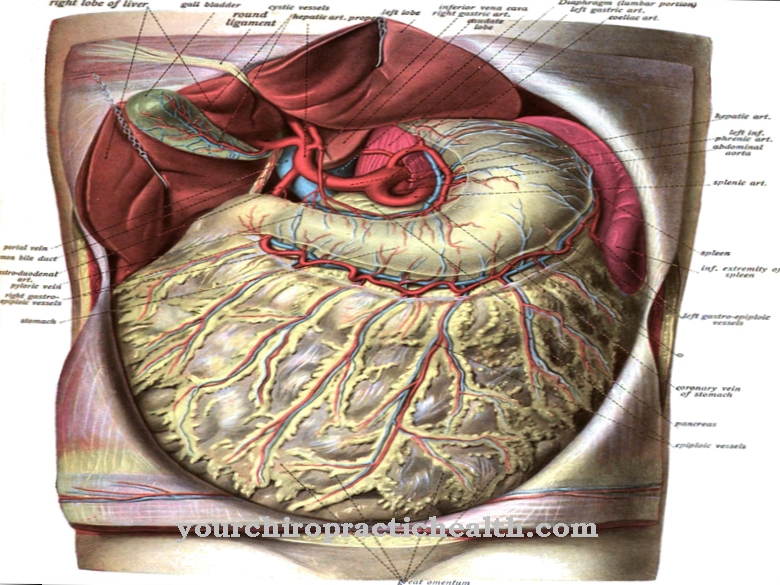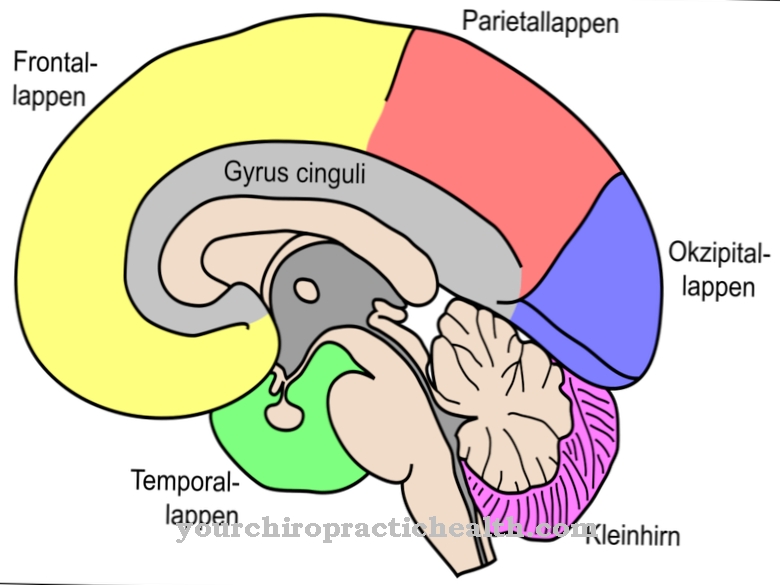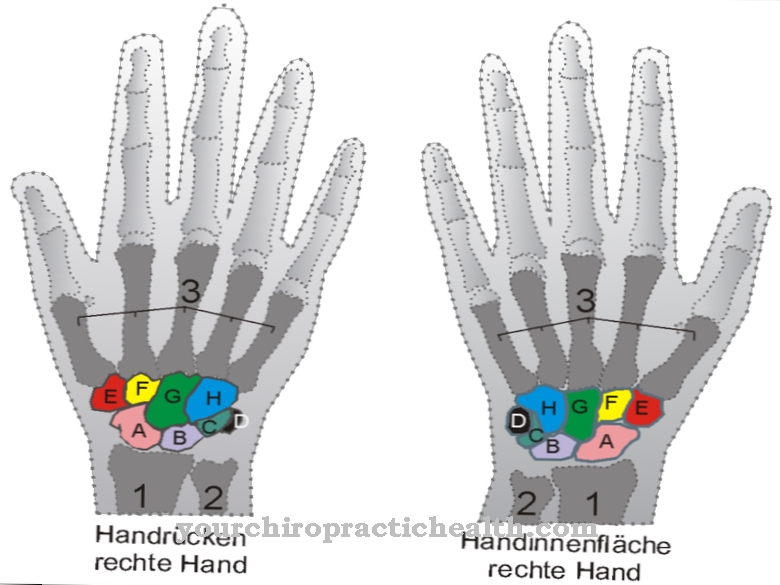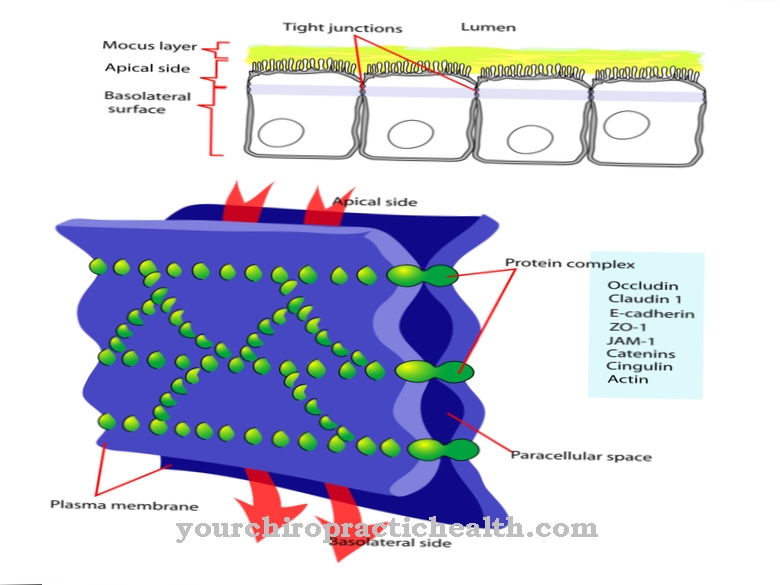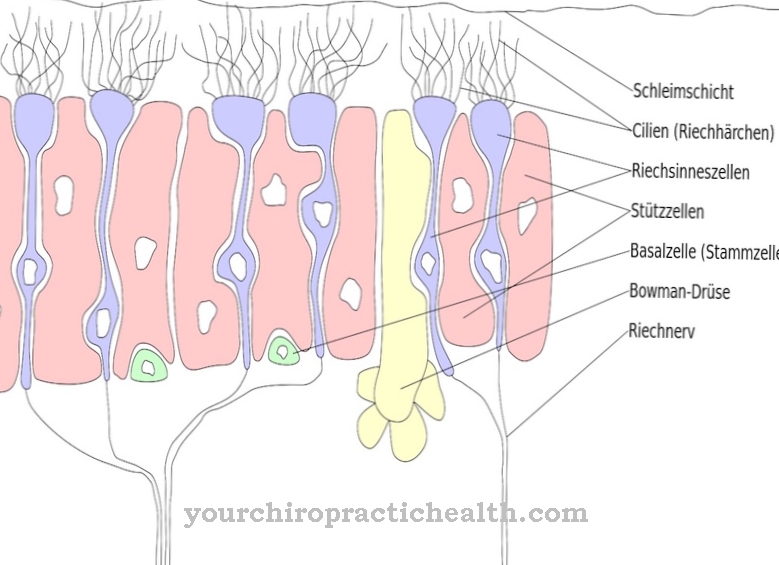The Stomach acid is a liquid in the stomach of humans or animals consisting of several components, which is mainly responsible for the digestion of food. The low pH value dissolves the protein chains in the food and the enzymes in the stomach break down the proteins further. If gastric acid production is disturbed, it can lead to infections of the digestive tract, and excessive gastric acid production leads to heartburn or stomach ulcers.
What is stomach acid?

The Stomach acid is a digestive fluid made in the stomach. It has a pH value of 1.5 - 3.5 and consists of hydrochloric acid (approx. 0.5%), large proportions of potassium chloride and sodium chloride.
Stomach acid plays a major role in the breakdown of proteins by digestive enzymes. It shreds the digested proteins to such an extent that the enzymes can completely break down the long amino acid chains. The production of gastric acid is regulated by cells on the edge of the stomach.
Other cells regulate the production of bicarbonate, a basic liquid that dampens the concentration of stomach acid when necessary. In addition, these cells form a layer of mucus to protect the stomach wall from attack by the acid.
Anatomy & structure
The Stomach acid is made by parietal cells in the stomach. Secretion is a complex and energetically consuming process. The parietal cells act in a dense network through which the acid is secreted in the lumen of the stomach.
These cells are part of a glandular tissue (epithelium) in the stomach lining. The result is a highly acidic environment within the stomach. Protein chains in the food consumed by humans lose their basic structure here and are broken down into individual components. Peptide compounds are exposed. The potassium chloride acid activates pepsinogen into the pepsin enzymes.
Another step in digestion as it cuts the connections in the protein chains. This process is called proteolysis. In addition, the growth of many microorganisms in the stomach acid is inhibited; a circumstance which prevents infections.
Functions & tasks
There are three phases of secretion Stomach acid. In the basal phase, a small amount of gastric acid is always released into the stomach in order to break down ingested food.
During the cephalic phase, 30% of stomach acid is produced and released through activities associated with ingesting food (e.g. taste and smell).
From the brain, these signals are passed on to the vagus nerve, a complex nerve cord that controls taste sensations. The parietal cells are stimulated and release stomach acid.
In the gastric phase, around 50% of the gastric acid required to digest food is produced. This is caused by the expansion of the stomach and the arrival of protein chains inside the stomach.
Caffeine and calcium can also promote the production of stomach acid. After the chyme (mixture of acid and decomposed food) enters the anterior tract of the intestine in the intestinal phase, the last 10% of the stomach acid is formed.
Diseases
A common complaint for many people with the Stomach acid is heartburn. Heartburn occurs when the stomach acid goes too high up the esophagus and irritates the areas there. Usually, the force of gravity and a sphincter muscle keep stomach acid from rising too high.
The muscle only opens when food is ingested. However, if it opens too often or doesn't close properly, acid can escape and cause painful irritation at the level of the sternum. Too much food or pressure in the stomach can also lead to heartburn, as can reaction to certain foods. These include: tomatoes, citrus fruits, onions, garlic, caffeine, or alcohol. Treatment for heartburn or chronic reflux is medication with pH-neutralizing agents and a prudent diet.
In addition, disturbances in the formation of gastric acid can lead to infections in the digestive tract, since microorganisms cannot be killed sufficiently. Too much stomach acid can lead to stomach ulcers. The acid then penetrates through the protective stomach lining and attacks the stomach wall behind it. These complaints can also be treated with medication.
You can find your medication here
➔ Medication for heartburn and bloatingTypical & common stomach diseases
- heartburn
- Reflux disease
- Inflammation of the lining of the stomach (gastritis)
- Stomach acidity
- Duodenal ulcer
- Irritable stomach
- Crohn's disease (chronic bowel inflammation)
- Ulcerative colitis
- Appendicitis

